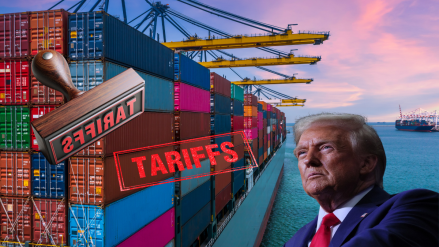With the 50% tariffs on export of goods to the US coming into effect, lakhs of India’s exporting units are staring at a bleak future. Smaller ones, especially in sectors like textiles, gems and jewellery, and footwear which are heavily dependent on the US market, may have no option but to down their shutters. After all, the US accounts for more than 30% of exports from these sectors. Exports of seafood are also vulnerable to a demand-shock-the US imported 37% of India’s total seafood exports of $7.5 billion in FY25. Indeed, the consequences for millions of workers could be dire since it will be hard for owners of exporting firms to retain them in the absence of any business.
Limited options for exporters
Many of the larger units may try to explore new markets such as the European Union or the Gulf region, but that will be an arduous task as competing countries like Vietnam and Bangladesh will have to pay much a lower tariff of 20%. In the apparel segment, for instance, the 50% US duty results in a tariff difference of 30-31% between India and competing nations. To be able to crack these markets, exports would need to offer a discount of 30-35% to win customers. It’s unlikely though that these markets would be able to absorb $12 billion worth of textiles that the US was buying annually. Routing exports via a third country is also a long shot. In sum, unless there is a reversal of the tariff hike, many exporting units will be wiped out.
Policy support is critical
Against this backdrop, the government’s 40-nation outreach programme to push exports in new markets is a good move. In addition, it must come to their aid with an economic package that will address the cash-flow issues faced by exporting units. This is important from the point of social welfare given the huge numbers that these units employ. The direct economic hit this time will be much smaller at an estimated 50-80 basis points (bps) of the gross domestic product than it was during the Covid pandemic. Importantly, the fisc today is in a far better shape than it was then and that affords the government room to extend support. Even if the fiscal deficit target of 4.4% for FY26 was to slip by about 10 bps, it should not be considered as straying from the path of consolidation given the extraordinary circumstances. Also, the country’s banks today have well-capitalised balance sheets with low delinquencies and can provide support.
Consequently, the industry demand for a special interest subvention scheme or access to loans at softer rates should be given due consideration. Banks can also consider a moratorium on repayments of the principal amounts, for at least six months. A scheme on the lines of the ECLGS-Emergency Credit Line Guarantee Scheme-that enables banks to provide collateral-free working capital, backed by a government guarantee, is believed to be in the works. The corpus should be meaningful. The government must ensure that exporters in these badly hit sectors should not suffer any incidence of levies. In general, while duties are refunded there are several local levies. State governments too can chip in and, if needed, the Centre could enhance their borrowing limits. The current crisis may not be as big as it was during the pandemic but the potential loss of livelihoods-estimated in lakhs-is a big concern. The government must provide short-term succour on an immediate basis.
